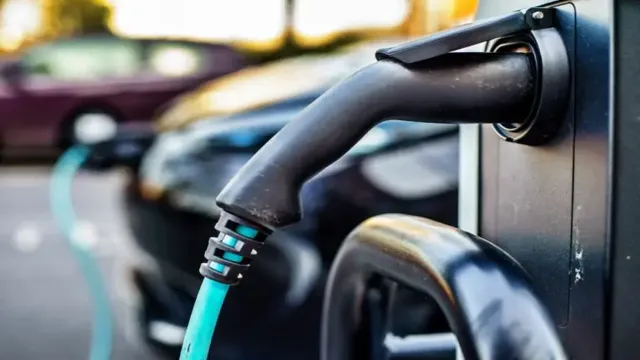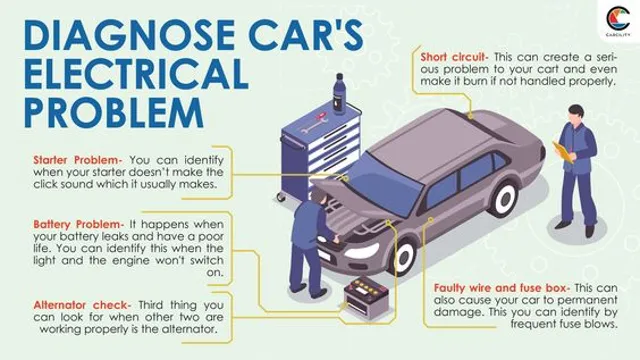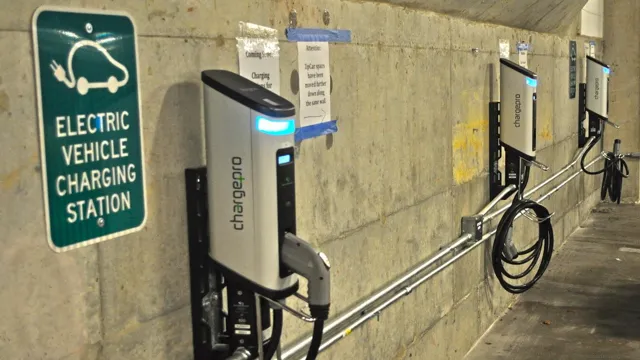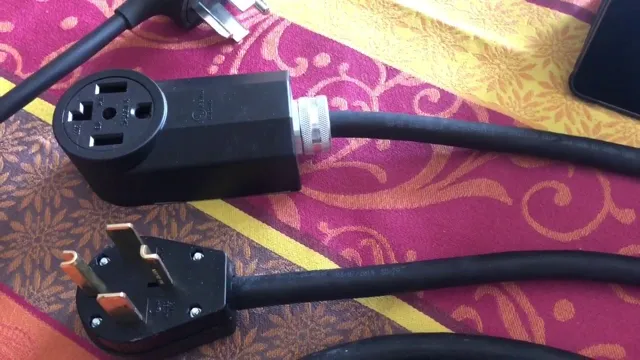Power Up Your EV: Debunking the Myth of Charging with a Regular Outlet
Are you considering purchasing an electric vehicle, but worried about the cost of installing a charging station? Not to worry! You can actually charge your EV using a regular outlet found in your home. While it may take a longer time to fully charge your vehicle using a regular outlet, it is definitely possible. All you need is a portable Level 1 charging cable, which comes standard with your EV purchase.
This cable can be plugged in to any standard wall outlet, allowing you to charge your vehicle anywhere there is an outlet. However, it is important to note that charging with a regular outlet will not provide as much power as a dedicated charging station, so it may not be the most efficient option for those with longer commutes or frequent long-distance trips. In those cases, investing in a charging station may be a better long-term solution.
Overall, charging your EV with a regular outlet is a convenient and cost-effective solution for everyday charging needs. Just remember to always follow safety guidelines and consult with a professional if you have any questions or concerns.
Understanding Your EV’s Charging Needs
Can you charge an EV with a regular outlet? The short answer is yes, but it depends on your EV’s charging needs. A regular household outlet, also known as a Level 1 charger, typically provides between 120 to 240 volts of electricity at a rate of 4 to
9 kilowatts per hour, which can be suitable for trickle charging small EV batteries. However, larger battery EVs will take a very long time to charge fully on a Level 1 charger, and extended use of a household outlet could potentially overload the circuit. If you want to charge an EV faster, you will need a Level 2 charging station that can provide between 240 to 480 volts of electricity at a rate of 7 to 11 kilowatts per hour.
It’s worth noting that installing a Level 2 charger will likely require a dedicated circuit installed by a professional electrician. Overall, it’s essential to understand your EV’s charging needs and invest in the appropriate charging infrastructure to ensure that you can charge it quickly and efficiently.
EV Charging Rates and Outlet Types
If you’ve just purchased a new electric car, one of the most important things you need to understand is its charging needs. There are different types of charging rates and outlet types that you need to be familiar with, so you can choose the most efficient and cost-effective charging option for your vehicle. Charging rates are usually categorized into Level 1, Level 2, and Level 3, with Level 1 being the slowest and Level 3 being the fastest.
The charging rates vary depending on the outlet type and the amount of power they can supply. Level 1 charging uses a standard 120-volt outlet and typically takes up to 20 hours to fully charge your car. Level 2 charging uses a 240-volt outlet and takes about 4-8 hours to fully charge your car.
Level 3 or DC fast charging is the quickest option, providing a full charge in as little as 30 minutes. It’s important to note that not all EVs can be charged using Level 3 charging stations, and some may require a specific type of outlet. Understanding your EV’s charging needs is vital for planning your daily commutes and long-distance driving, ensuring that your car is always charged and ready to hit the road.
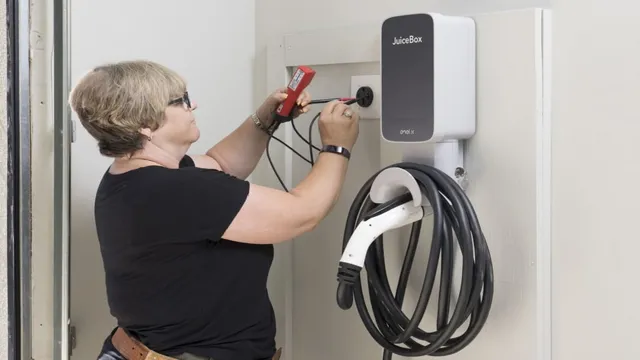
Factors That Affect Charging Time
As an EV owner, it’s important to understand the factors that affect your vehicle’s charging time. One key factor is the size of your car’s battery. Cars with larger battery packs take longer to charge, while those with smaller ones will charge relatively quickly.
Another important factor is the type of charger you’re using. Level 1 chargers, which use a standard household outlet, are the slowest, while Level 3 chargers can charge your car up to 80% in just 30 minutes! Other factors can include temperature, as cold temperatures can slow down charge times, and whether you’re charging at peak hours when electricity demand is high. By understanding these factors, you can make informed decisions about when and where to charge your EV, ensuring that it’s always ready to hit the road when you are!
Getting the Right Equipment
Many first-time electric vehicle (EV) owners wonder if they can charge their vehicle with a regular 120-volt outlet found in their home. While it’s technically possible, it’s not recommended as it can take a very long time to fully charge your EV. A standard 120-volt outlet provides only about
4 kW of power, while most EVs require at least 7 kW of power to charge properly. This means that it can take up to several days to fully charge your vehicle using a regular outlet, depending on the size of your battery. It’s best to invest in a Level 2 charging station which can provide faster charging times and ensure that you always have a fully charged vehicle.
These charging stations can be installed in your home or workplace, and many public charging stations are available for use on the go. So, while it’s technically possible to charge your EV with a regular outlet, it’s not the most practical solution and investing in the right equipment is necessary for a more efficient and convenient charging experience.
Choosing the Right Adapter
When it comes to choosing the right adapter, it can be challenging to know where to start. With so many options available, it’s essential to get the right equipment for your needs. The first thing to consider is the type of device you’re looking to connect.
Different adapters work better with certain devices, and it’s crucial to ensure compatibility. For example, if you’re trying to connect your laptop to a TV, you may need a display adapter that’s compatible with both devices. Additionally, you should also consider the type of connector that your device uses.
The last thing you want is to purchase an adapter only to find out that it doesn’t fit your device’s input port. By doing some research and making sure you have the correct information, you’ll be able to select the right adapter that meets your needs. Remember, when it comes to adapters, one size does not fit all!
Understanding Voltage and Amperage
When it comes to electrical equipment, understanding voltage and amperage is crucial to getting the right equipment for your needs. Voltage refers to the amount of electrical force that flows through a circuit, while amperage represents the amount of electrical current present in the circuit. The right equipment for you will depend on the voltage and amperage requirements of your specific project or application.
It’s important to keep in mind that using equipment with too low of a voltage or amperage can cause damage or even result in injury, while using equipment with too high of a voltage or amperage can also cause damage or be hazardous. Before purchasing any electrical equipment, always double check the voltage and amperage requirements to ensure that you’re using the right equipment for your needs. By doing so, you can ensure that your project runs smoothly and safely.
Safety Precautions When Charging
When it comes to charging devices, safety should be the top priority. One essential safety precaution is to ensure that you have the right equipment for charging. This means using the appropriate charging cable and power source for your device.
Avoid using cheap or knockoff charging cables and chargers as they may not meet safety standards and could damage your device or even cause a fire. Always make sure to use the original charging equipment that came with your device or purchase certified charging equipment from reputable manufacturers. Using the right equipment will not only prevent potential accidents but also help maintain the performance and longevity of your device.
So, always double-check that you have the right equipment before charging your device to ensure safe and efficient charging.
Alternatives to Regular Outlets
Can you charge an EV with a regular outlet? The short answer is, technically yes, you can. However, it’s not ideal. Regular outlets, also known as 120-volt outlets, typically provide a lower amperage than what’s needed to charge an EV to full capacity in a reasonable amount of time.
This means that charging your EV with a regular outlet can take a very long time, potentially up to several days. Additionally, using a regular outlet for charging an EV can put a strain on the electrical circuit in your home, which can be dangerous and potentially cause a fire. So what are the alternatives to regular outlets for charging your EV? One option is a Level 2 charging station, which uses a 240-volt outlet and provides a higher amperage than a regular outlet, allowing for faster charging times.
Another option is a DC fast charging station, which provides an even higher amperage and can charge an EV to 80% capacity in as little as 30 minutes. However, it’s worth noting that these charging stations can be expensive to install and may not be ideal for all EV owners depending on their charging needs and budget.
Installing a Dedicated EV Charger
If you’re considering installing a dedicated EV charger, you know that regular outlets just won’t cut it. Luckily, there are plenty of alternatives available that can provide the power you need to charge your electric vehicle quickly and efficiently. One option is a Level 2 charger, which can provide up to 240 volts of power.
These chargers require professional installation, but they’re a great choice if you want to charge your vehicle at home without waiting for hours. Another option is a DC fast charger, which can provide even faster charging times. Keep in mind that these chargers are more expensive and may not be necessary for everyone.
Ultimately, the choice between these alternatives depends on your specific needs and budget. With the right charger, you can enjoy all the benefits of electric vehicle ownership and never worry about running out of juice on the road.
Alternative Charging Options
Electric vehicles are becoming increasingly popular, and charging options have come a long way. While regular outlets can provide a charge, they aren’t always the most efficient option. Fortunately, there are alternatives to consider.
One option is to have a charging station installed in your home. This can provide faster charging times than a regular outlet and can be more convenient for daily use. Another option is to use public charging stations, which are becoming more accessible in many areas.
These stations can provide a quick charge while you’re out running errands or on a road trip. Additionally, some EV owners have started to invest in portable chargers, which can be a great option for those who frequently travel or need to charge their EV in various locations. No matter which option you choose, it’s important to do your research and consider your individual needs and preferences to find the best charging solution for you.
Conclusion
In conclusion, while it is technically possible to charge an electric vehicle with a regular outlet, it is not recommended for a number of reasons. For one, it takes an incredibly long time to fully charge the vehicle with such low-level power. Additionally, using a regular outlet can potentially damage the electrical system and create safety hazards.
It’s like trying to fill up an Olympic-sized swimming pool with a garden hose – it’s possible, but it’s probably not the most efficient or smartest option. So if you’re looking to power up your EV, it’s best to invest in a proper charging station for optimal performance and safety.”
FAQs
What type of outlet is required to charge an electric vehicle?
It depends on the level of charging. Level 1 requires a regular household outlet (120V), while level 2 requires a higher voltage outlet (240V) which can be installed at home or in public charging stations.
Can a regular outlet charge an electric vehicle?
Yes, a regular household outlet (level 1) can charge an electric vehicle, but it will take longer compared to level 2 charging.
Is it safe to charge an electric vehicle with a regular outlet?
Yes, it is safe to charge an electric vehicle with a regular household outlet as long as the outlet is in good condition and the vehicle’s charging requirements are within the outlet’s capacity.
Can I install a higher voltage outlet at home for faster EV charging?
Yes, you can install a level 2 charging station at home, which requires a higher voltage outlet (240V) for faster charging. A licensed electrician can help with the installation.

